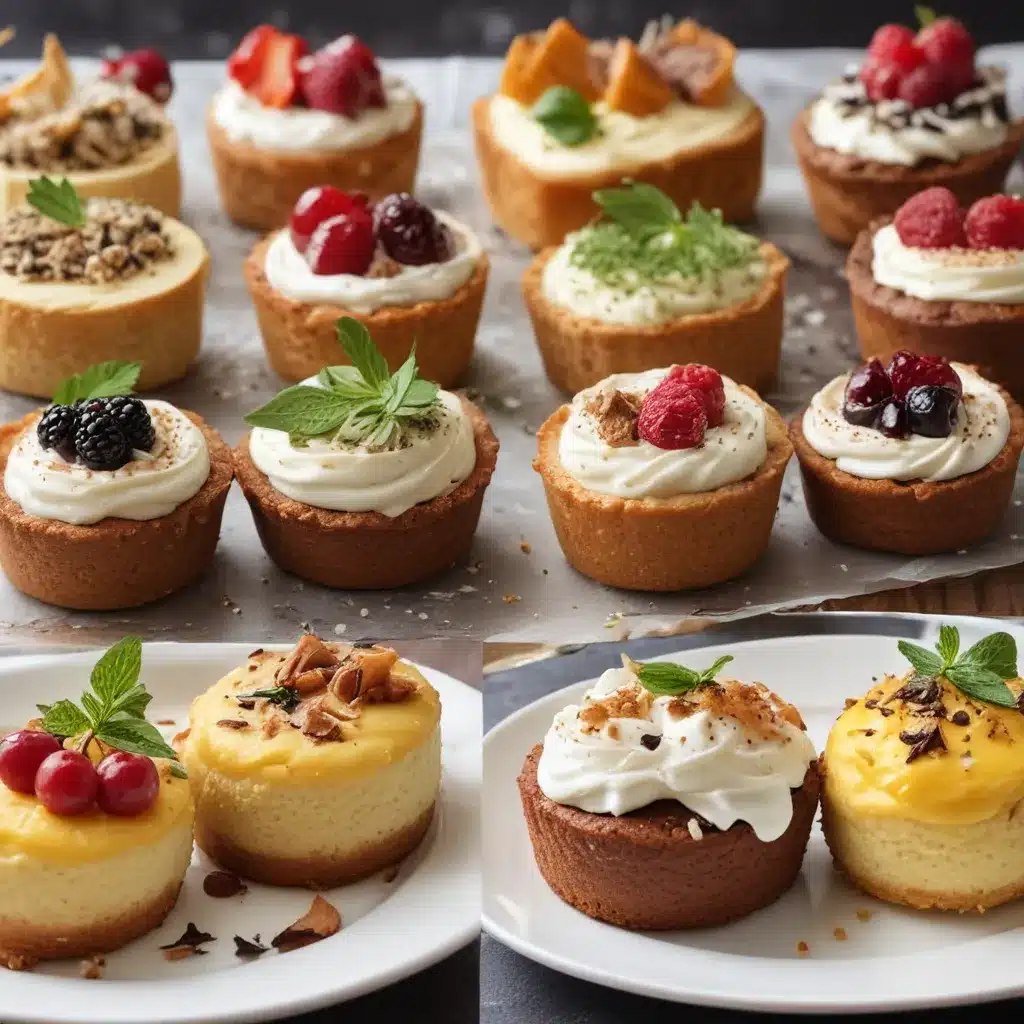
Discovering the Savory Side of Dessert
I’d never considered myself much of a pastry chef. Sure, I could whip up a decent batch of chocolate chip cookies or a simple apple crumble when the mood struck. But anything more complex, like a soufflé or a tiered wedding cake? Forget it. Those were the domain of true culinary artists, not someone like me who was content to keep my sweets firmly within the boundaries of the expected and the familiar.
That all changed, however, when I embarked on a journey to explore the world of savory desserts. It started innocently enough, with a casual mention in a magazine article about avant-garde chefs in Spain who were challenging the traditional notions of what dessert should be. [1] Intrigued, I dove headfirst into this brave new culinary frontier, determined to uncover the truth about this subversive trend.
Venturing into the Unknown
My first stop was a visit to the EspaiSucre, a research laboratory and school in Barcelona dedicated to the art of sweet experimentation. [1] There, I met Jordi Butrón, the chief scientist-cook, who wasted no time in dispelling my preconceptions about dessert.
“In retrospect, they’re disgusting, many of the things we used to do—too much fat and too much sugar, and a series of clichés taught while being rationalized,” he told me sternly. [1] But it was his next words that truly opened my eyes: “The key thing now for a cook is to develop a library of flavors that you can recall. If I say to you, ‘Apple and cinnamon,’ you would click in immediately. ‘Yes, apple! Yes, cinnamon!’ But what if I say ‘Apple, asafetida’? Nothing! You have nothing stored there.”
Asafetida? I had never even heard of the stuff, let alone imagined pairing it with the humble apple. But as Butrón explained, the true art of dessert-making lies in expanding our flavor horizons, pushing past the familiar and embracing the unexpected. [1]
Breaking Down the Sweet-Savory Divide
Suitably intrigued, I sat down for a meal of five courses, all ostensibly “sweet” but each starting with a savory theme. [1] The combinations were nothing short of revelatory: cucumber-ginger-pineapple-tarragon sherbet, olive-oil cake with San Simón cheese and white-peach sorbet, Idiazábal-stout-beet-cherry cake. Each dish deftly balanced sweet and savory elements, challenging my palate and leaving me craving more.
As I sat there, scraping the plate of the final course (a divine truffle-hazelnut-toast cream pudding), I realized that the genius of these desserts lay not just in their unexpected flavors, but in the way they seamlessly blurred the line between sweet and savory. [1] It was as if the chefs had taken the traditional rules of dessert-making and tossed them out the window, inviting me to rethink everything I thought I knew about how a meal should end.
Embracing the Savory Muse
My next stop was a meeting with Albert Adrià, the younger brother of the legendary Ferran Adrià and a pioneering force in the world of savory desserts. [1] As he sketched out his creative process, I was struck by his boundless imagination and his willingness to embrace the unexpected.
“My question was, Why can’t you serve main dishes that are sweet, and why can’t you have savory tastes during the dessert time period?” he mused, recounting his early experiments with saffron ice cream and a “dirt” dessert that evoked the changing hues of autumn leaves. [1] The more he spoke, the more I realized that the true innovation in this field lay not in mastering traditional techniques, but in shattering preconceived notions about what dessert could (or should) be.
The Savory Revolution
When I sat down with Ferran Adrià himself, the elder statesman of this culinary revolution, the picture became even clearer. [1] As he traced the history of desserts, from Carême to Guérard and beyond, he emphasized the key role that pastry chefs had played in driving innovation, always seeking to challenge the status quo.
“Desserts are naturally denatured food,” Adrià declared, his eyes shining with passion. [1] “Birthday cake is the most denatured thing on earth.” But it was his insights about the importance of sequence and structure that really resonated with me. “What matters is how we end the meal. With a surprise? A flourish? Reassurance? That’s the big question about dessert: how do we close out dinner? How do we finish the meal?”
Savoring the Sweet and the Savory
As I left Barcelona, my head spinning with new ideas and flavors, I realized that the true revolution in desserts was not about whether they were sweet or savory, but about embracing the full spectrum of human experience. [1] Just as the Cubists had used ordinary objects to shatter our preconceptions about art, these avant-garde chefs were using dessert as a vehicle to challenge our most deeply held assumptions about the nature of food itself.
And so, with a newfound appreciation for the limitless possibilities of the pastry arts, I returned home, eager to get into the kitchen and start experimenting. Perhaps a savory bread pudding with artichokes and mushrooms? [8] Or maybe a Dutch baby pancake with a twist, topped with wilted spinach, cheese, and a sprinkle of chives? [4] The options were endless, and I couldn’t wait to see what delicious surprises might emerge.
After all, as Ferran Adrià had so eloquently put it, “There must be some way” to create the impossible. [1] And if these culinary pioneers could dream it, then by golly, I was going to try and make it a reality.
[1] Knowledge from https://www.newyorker.com/magazine/2011/01/03/sweet-revolution
[4] Knowledge from https://www.weheartfood.com/2007/12/savory-bread-pudding.html
[8] Knowledge from https://www.reddit.com/r/harrypotter/comments/rpckzk/okay_i_cannot_be_the_only_person_who_just/
